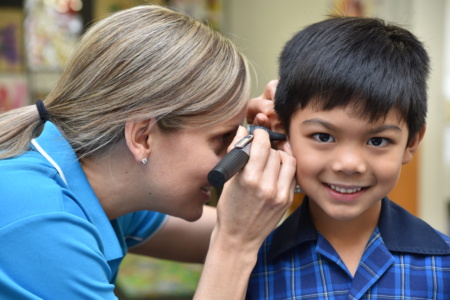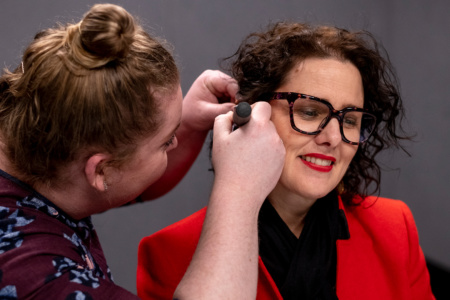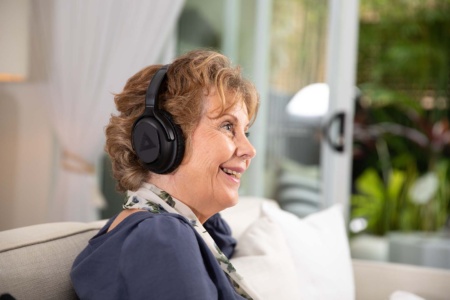Whether it's to listen to music or the TV, for a call at work, or to study, headphones are a regular part of everyday life for many of us. However, for people who also use hearing devices such as hearing aids or cochlear implants, using headphones to tailor your listening experience comes with some careful considerations.
If you have hearing aids or a cochlear implant, the first step is to check with your audiologist if the device has Bluetooth technology. If they do, you can stream sound and play audio directly from your smartphone or another wireless device, cutting out the need for headphones altogether.
"You will get the best sound directly via your hearing aids or cochlear implants, depending on the hearing technology you have for your specific hearing loss“, said Hear and Say Audiologist, Anna Whittington.
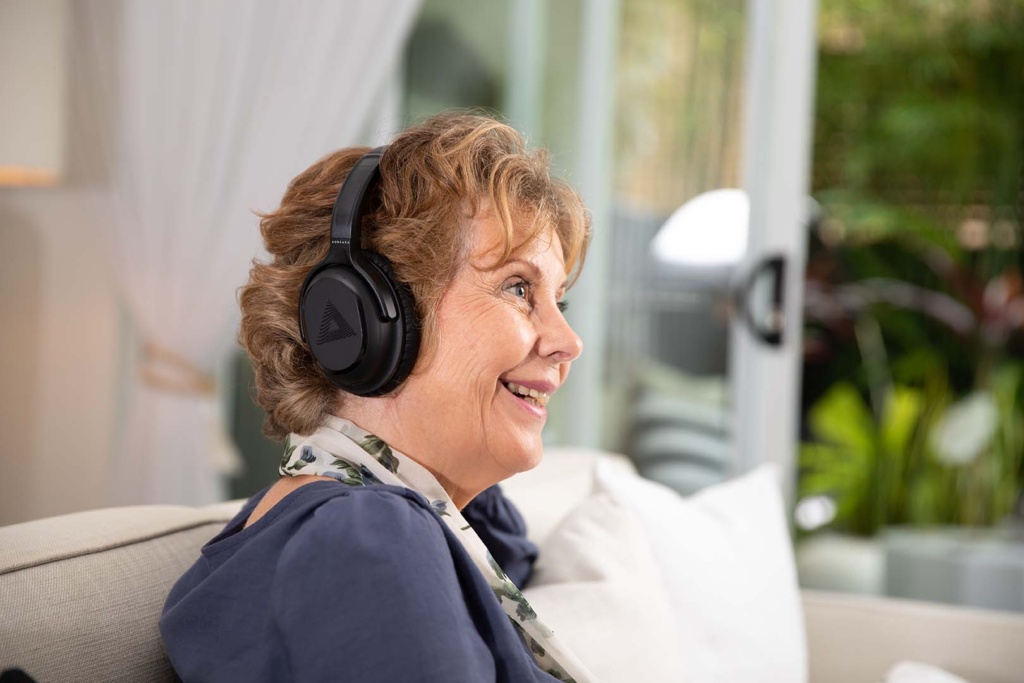
Things to consider when buying headphones with hearing aids
For some people with a hearing device, tracking down suitable and compatible headphones can be challenging.
Over-ear headphones, on-ear headphones, bone-conduction headphones, earbuds, in-ear headphones, stereo headphones, and noise-cancelling; there are a lot of options, and it can be a trial-and-error process.
When it comes to wearing headphones and finding the best headphones for you and your individual needs, the main factor to consider is fit.
For hearing aid users, it is important to find headphones that fit comfortably around your hearing aid microphones. If your headphones do not sit up and over the microphones, then you may not pick up any sound, so over-the-ear models can be a great option.
Ensure you also check for audio feedback – that is, listening for a whistling noise coming from the hearing aid – when using this style of headphones. If there is feedback, try repositioning the headphones, or test out a few models to determine what suits you best. Your Hear and Say Audiologist can assist you if hearing aid adjustment is required.
If the hearing loss is mild or in one ear only, some people may also prefer the sound without their hearing aids. Standard headphones can be used in this case, but a number of modern headphones can be customised to exactly match your hearing level. Speak to your Hear and Say Audiologist for more information.
In addition to fit, sound quality, noise isolation, and noise cancellation technology can be important and allow you to enjoy your music at lower volumes. If, however, you need to be aware of ambient sound, bone-conduction headphones may be a great choice for you.
Regardless of whether you wear hearing aids that are in-the-ear or behind-the-ear, there are some great headphones to suit.
Finding suitable headphones for In-the-ear (ITE) hearing aids
Finding the right fit for headphones and hearing aids can be easier for smaller ITE types of hearing aids. These include:
- Invisible in the canal (IIC hearing aids);
- In the canal (ITC);
- Completely in canal (CIC hearing aids); and
- Low-profile hearing aids.
These types of hearing aids all fit directly discreetly in the ear canal or in the ear and are generally compatible with on-ear headphones and over-the-ear headphones. Invisible in the canal hearing aid wearers may also be able to wear earbuds.
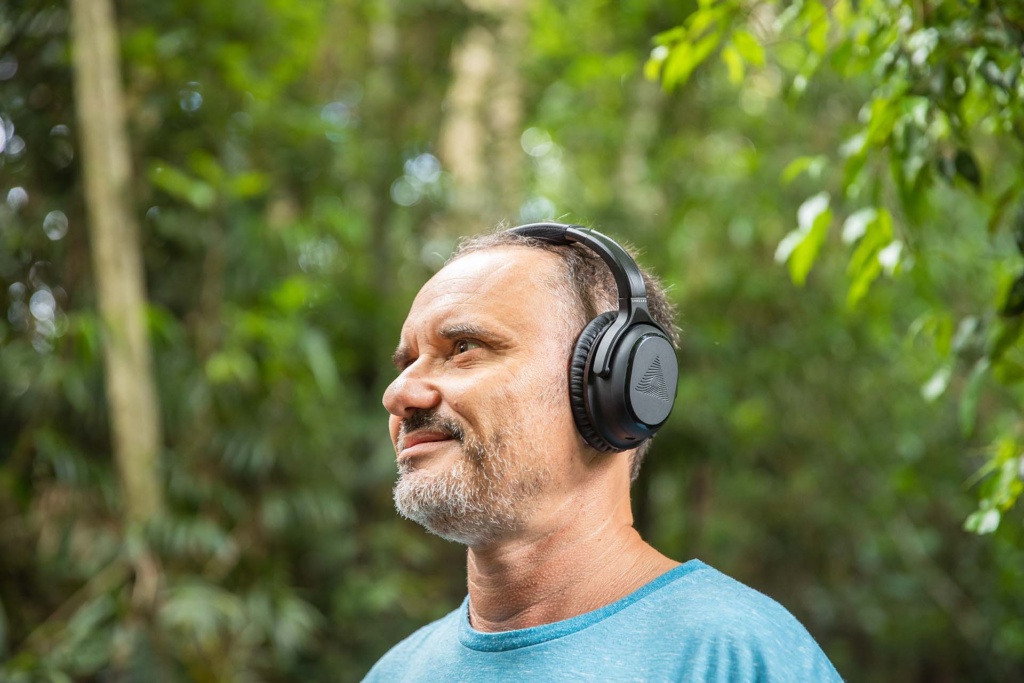
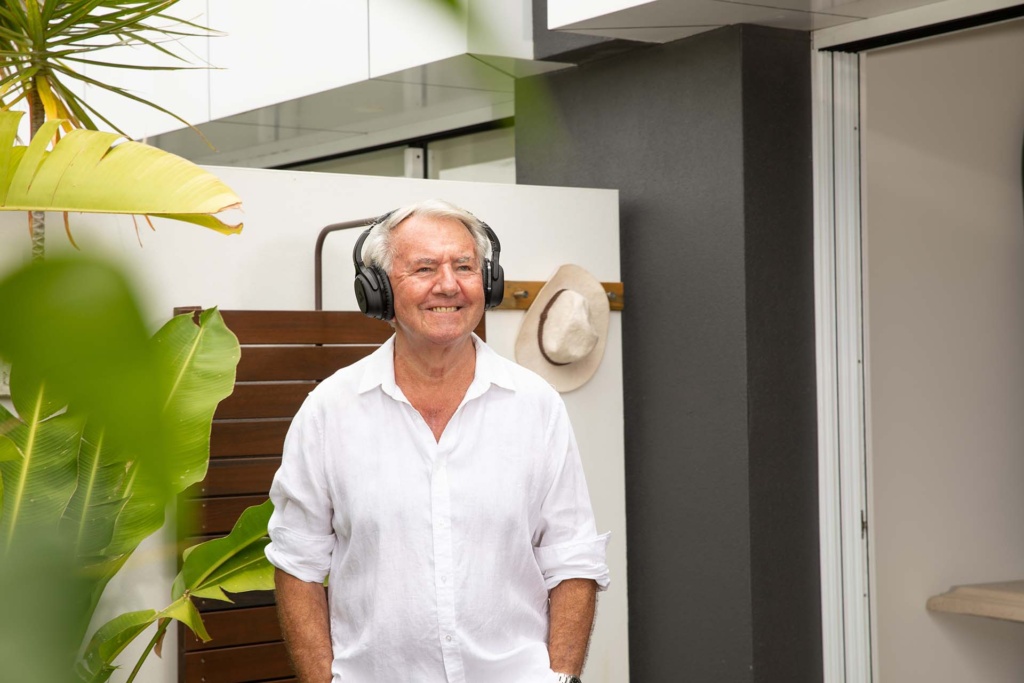
Finding suitable headphones for Behind-the-ear (BTE) hearing aids
If your hearing aids sit behind the ear, the options for headphones are limited. These include:
- Behind-the-ear;
- Receiver-in-the-canal (RIC); and
- Receiver-in-the-ear (RITE).
Whilst hearing aids range in size, these all have a component that sits behind the outer ear and won’t work with on-ear headphones. Headphones that can be customised to your hearing may be a suitable solution.
Look for large styles that fit comfortably over both the ear and the hearing aid, so that sound can reach the hearing aid microphone without it being covered by the headphone’s cushioning. It is important to try on different models because if they do not fit completely over, the hearing aids will pick up external sound instead.
What are bone conduction headphones?
Bone conduction headphones don't actually rest on the ear, but directly in front on the listener's cheekbones. These specialised wireless headphones are gathering attention because, unlike traditional headphones and earbuds, the eardrum doesn’t vibrate to pass the information along to the cochlea. Rather, the vibrations from the bone conduction bee-lines for the cochlea instead.
With the lack of eardrum involvement, this technology is good for people with hearing deficiencies, as the bone conduction vibration acts in lieu of the eardrum.
These headphones are ideal for in-the-ear hearing aids, in the canal, completely in the canal, or invisible in the canal hearing aid user. Plus, some bone-conduction headphones are waterproof and can even be worn swimming.
Can bone-conduction headphones damage your hearing?
Even though these headphones bypass your outer ear and middle ear entirely, they still send sound to the cochlea and they can still damage your hearing if used improperly or at too high a volume. Like all headphones if used correctly, bone-conduction headphones are safe to use.
If you work in an office space, live in a city, and want to remain aware of background noise like traffic while walking or cycling, bone-conduction headphones may be a great solution!
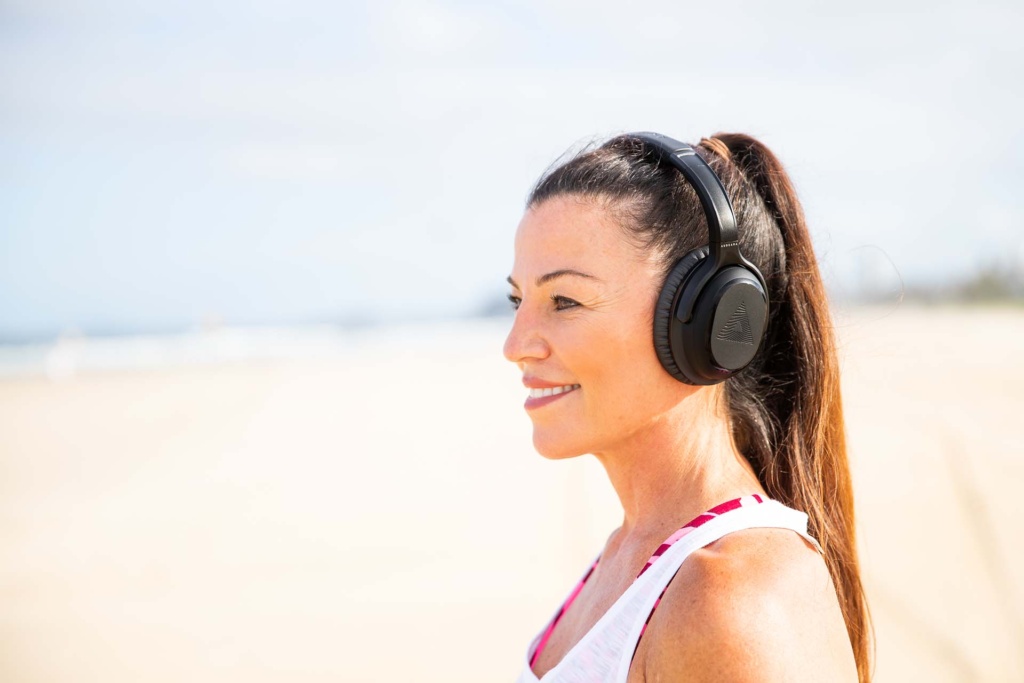
Audeara A-02 wireless headphones and TV bundle
Audeara A-02 over-the-ear headphones can be programmed for optimal listening for anyone with mild up to severe hearing loss and are available in your nearest Hear and Say centre. As an approved Assistive Listening Device, Audeara headphones may be purchased using Government funding through the Department of Veterans Affairs (DVA) and RAP Program of Hearing Services Program (HSP).
Still not sure which headphones are best suited? Speak with you Hear and Say Audiologist or hearing healthcare professional.
We’re here to help. Book a hearing test or speech and language assessment for your child.
Get in touch

